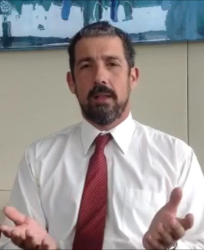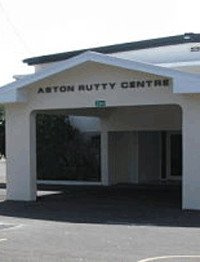Archive for March 27th, 2014

Violence earns 1st offender five years jail
(CNS): A 24-year-old local man with a previously squeaky clean record was handed a jail sentence of five years and two months Thursday after he was convicted for what was described as an “unprovoked and extremely violent” attack. Nicholar Orlando Kerr was convicted of wounding with intent to cause grievous bodily harm following an early morning assault outside the victim’s home in the swamp area of George Town last summer. During the sentencing the court heard that there had been bad blood between Kerr and the victim, known as ‘Ice’, which came to a head when Kerr ran his victim down, crashed into his apartment, engaged in a fist fight and then stabbed him in the chest and neck.
The complainant suffered a punctured lung as well as a serious neck wound and various other lacerations during the attack, which started, the court heard, when Kerr had unexpectedly spotted his victim arriving home after the men had both attended the same late night party in the industrial area of the capital.
As the complainant arrived home, and was trying to find his keys to open the door, he heard a car revving close by and turned to see Kerr driving the vehicle directly towards him. In an effort to escape the victim dived into a passage but was still struck in the legs by the car, which also smashed into the apartment wall. In a bid to escape his attacker, 'Ice' jumped over the front of the car and began to run but he was caught by his attacker, who had left his crashed car and gone after his victim on foot.
The men reportedly engaged in a fist fight, during which ‘Ice’ was said to have bitten his attacker in the chest, but at some point during the fight Kerr stabbed his opponent multiple times. However, the question of how Kerr got the knife remained unanswered. Kerr claimed it came from his victim while ‘Ice’ said it came from one of Kerr’s friends that had been in the car with him when he arrived at his home.
Following the fight ‘Ice’ was taken to hospital by a person described as a good Samaritan and treated for serious injuries in the intensive care unit.
Meanwhile, Kerr headed to the police station, where he turned himself in, claiming that he had been attacked first and the entire episode was a matter of self-defence. Given the seriousness of his victim’s injuries, he was, however, ultimately charged with attempted murder and an alternative count of wounding with intent to cause GBH.
At first Kerr had denied the charges, pleading not guilty to both counts. But on the morning of the trial Kerr’s attorney made an application, and following legal arguments he agreed to plead guilty to wounding with intent.
The judge heard that Kerr had no criminal record at all, that he was gainfully employed, college educated, from a stable family background and in a stable relationship with his fiancé. He was the father of a young child, with whom he was very actively engaged and paid maintenance for. He submitted glowing references from his employers and pastor to the court and following a social enquiry report Kerr was rated as having a very low risk of re-offending.
The out of character violent attack was described as an inexplicable aberration that may have been connected or motivated by an attack that he said had been perpetrated against him at an earlier date by the victim. Although Kerr reported that attack, no action was taken following police enquiries.
As he imposed a sentence of five and half years on Kerr, in which he had included a six month discount for his very late guilty plea, Justice Malcolm Swift said that the only apparent motive for the violent attack was vengeance. The judge noted that Kerr had been very determined to harm his victim, illustrated by the fact that he smashed up his own car in his efforts to run the man down.
The judge ordered that four months of Kerr’s sentence had already been served because although he had been bailed, he was on an electronic tag and a home curfew of varying hours since his arrest. The judge calculated that the lock-down curfew period of each day equated to a half or a quarter of a day in jail, as he credited him with the time served and sent him down to begin serving the remaining five years and two months.
WEPS tops child/teacher ratio
(CNS): The West End Primary School (WEPS) on Cayman Brac has a better student/teacher ratio than the Lighthouse School, which is dedicated to special education needs (SEN) students. WEPS has six children for every teacher, compared to a student/teacher ratio of about 7:1 at Lighthouse. At the Brac's Creek & Spot Bay (C&SB) primary the ratio is about 8:1, compared to 9½:1 at North Side, the school with the most teachers per child of all primaries on Grand Cayman other than Lighthouse, according to figures released by the education ministry following a freedom of information request by CNS. However, the ministry's chief officer has said that the data for Cayman’s primary schools indicates no strong connection between the size of the class and students outcomes.
"In fact, some of our largest classes, in some cases including our maximum class size of 28, have the highest rates of progress and achievement in mathematics and English according to the data, whereas other smaller classes, including some of only 5 students, have the lowest progress rates," CO Mary Rodrigues told CNS.
The figures provided (see below) do not include the Little Cayman Education Service, which has three primary students taught by one teacher and one teacher's aide. The numbers include classroom teachers as well as staff for specific areas, such as physical education, music, art and SEN, some of whom teach at more than one school, which accounts for the fractions of teachers in the numbers supplied.
Peripatetic staff on Cayman Brac teach at two schools over three campuses. Since the Creek and Spot Bay schools successfully amalgamated in 2003, the Reception class through Year 3 have been taught at the Creek, while kids in Years 3 to 6 attend the Spot Bay campus.
The total number of primary students on Cayman Brac is 137, from Reception through Year 6. There are seven classes at C&SB, the smallest being Year 1 with five students and the largest being Year 3 with 16. At WEPS there are only two year-group classes in double figures: Reception with 12 children and Year 4 with ten. Of the rest, there is one class of five students, two of six and the others have seven and nine children.
The schools with the highest student/teacher ratio are Prospect Primary (about 19:1) and Savannah (about 18:1). John A. Cumber Primary has the most students, with a current enrollment of 587 and about 16 children per teacher. Red Bay has a ratio of about 15:1, while Bodden Town and George Town primaries each have slightly more than 13 children per full time teaching staff.
The smallest school on Grand Cayman is North Side with 88 students, and the school has a better student/teacher ratio than the next smallest, East End, which has 108 students and slightly more than 12 students per teacher.
Commenting on the figures, Chief Officer Rodrigues pointed out that most researchers support the position that class size is only one factor impacting student outcomes and that teacher effectiveness is a more significant factor in promoting student success.
While there is no clear consensus among international researchers on the impact of reducing class sizes, Rodrigues said, in terms of budget decisions there is consensus that when it comes to raising student attainment, class size reduction policies are not the best option to get value for money compared to others, such as increasing teacher effectiveness.
“Much of the discussion depends upon what the starting point for class size reduction actually is,” she added, noting that in some successful countries, such as Japan, class sizes can be over 40, though most countries maintain primary classes in the low 20's wherever possible.
With regards to very small classes, the chief officer pointed out that some research indicates that reducing class sizes below 10-15 children has no increased benefit and may even have negative impacts.

Beneficial ownership registry costly with little benefit
 (CNS Business): Making beneficial ownership information available to the wider public carries significant risks that people living in places that are safe, like Cayman or the UK, forget or do not understand, according to Cayman Finance CEO Gonzalo Jalles. “There are parts of the world where unfortunately, the wealthy are under risk and therefore there has to be right of privacy,” he told CNS Business in this week’s video interview. Representing the umbrella organisation for Cayman’s financial services industry, he said they believe a central registry would add cost to customers for little to no benefit. Read more in CNS Business
(CNS Business): Making beneficial ownership information available to the wider public carries significant risks that people living in places that are safe, like Cayman or the UK, forget or do not understand, according to Cayman Finance CEO Gonzalo Jalles. “There are parts of the world where unfortunately, the wealthy are under risk and therefore there has to be right of privacy,” he told CNS Business in this week’s video interview. Representing the umbrella organisation for Cayman’s financial services industry, he said they believe a central registry would add cost to customers for little to no benefit. Read more in CNS Business

Parliament to meet on Cayman Brac
 (CNS): Eleven years since the Legislative Assembly was last held on Cayman Brac, LA members will be heading to the Sister Island next month to meet at the Aston Rutty Civic Centre for a three day sitting. On Tuesday 8 April the Cabinet members will also have their meeting on the Brac, more than a year since the government executive last met there, with ministers meeting at the District Administration Building in Stake Bay. Officials said government tries to hold a Cabinet session on the Brac at least once during each administration. Government has not yet revealed the costs for the LA meeting, which will see 18 members and support staff flown over and accommodated on the island for three days.
(CNS): Eleven years since the Legislative Assembly was last held on Cayman Brac, LA members will be heading to the Sister Island next month to meet at the Aston Rutty Civic Centre for a three day sitting. On Tuesday 8 April the Cabinet members will also have their meeting on the Brac, more than a year since the government executive last met there, with ministers meeting at the District Administration Building in Stake Bay. Officials said government tries to hold a Cabinet session on the Brac at least once during each administration. Government has not yet revealed the costs for the LA meeting, which will see 18 members and support staff flown over and accommodated on the island for three days.
“Holding a meeting of the LA in Cayman Brac gives us an opportunity to demonstrate our solidarity with the Sister Islands and allows the public to see how their parliament functions up close and personal,” said Cabinet Secretary Samuel Rose. “Many Cayman Brac residents have never had an opportunity to attend a meeting of the Legislative Assembly in Grand Cayman. It is all the more special given that both the Speaker and the Deputy Premier are from Cayman Brac.”
Radio Cayman and CIGTV 20 will carry the LA meeting with audio only.

Alden & Ozzie US dumps visit
 (CNS): The premier will get just a few days at home this weekend when he returns from London before he heads on out again for another overseas trip. This time it is to visit a number of waste-management and recycling centres in Florida with the minister responsible for the George Town landfill. Officials said the men will be assessing modern, efficient waste management systems in the United States as part of what the wider public considers very slow progress towards addressing the island’s most pressing problem. Despite public opinion that the dump is a major priority, the premier still emphasised the need to follow process.
(CNS): The premier will get just a few days at home this weekend when he returns from London before he heads on out again for another overseas trip. This time it is to visit a number of waste-management and recycling centres in Florida with the minister responsible for the George Town landfill. Officials said the men will be assessing modern, efficient waste management systems in the United States as part of what the wider public considers very slow progress towards addressing the island’s most pressing problem. Despite public opinion that the dump is a major priority, the premier still emphasised the need to follow process.
Premier Alden McLaughlin said government will use the processes under the Public Management and Finance Law to find a waste management solution. The processes will ensuretransparency and accountability in the tendering and procurement phases.
“While there have been previous tenders, and there are quite a few studies about this subject, the fact is that the previous iterations were not subjected to the level of research, assessment and scrutiny that the process currently requires,” he said.
As a result McLaughlin and Minister Osbourne Bodden will travel to Tampa next week to visit various relevant facilities in Florida.
One of the first stages in the procurement process is the drafting of a Strategic Outline Case document that will form the basis of an RFP for consultancy services for the delivery of an Outline Business Case. A local steering committee has been working on the SOC and hopes to have it finalised for Cabinet’s approval in the next few weeks. Once approved by Cabinet, it will be released to the public, officials said.
Bodden said he was pleased with the progress the steering committee is making on the procurement process. He also pointed to improvements that the environmental health team has made at the George Town landfill.
“I want to assure the concerned members of the public that we are not waiting on the procurement process to make improvements; we are also working hard to identify and implement interim measures to help improve the situation,” the minister said.
Steps taken to date include the removal of scrap metal through a CTC-tendered contract, the lease of essential equipment to improve operations at the landfill, enhanced fire safety measures, the procurement of much-needed equipment to replace existing non-functioning equipment that is beyond its depreciated life-span, and covering additional surface area of the landfill with soil cover.
According to the premier’s office, the men will start their waste management tour on Monday at the Lee County Solid Waste Resource Recovery Facility, which operates as Covanta Lee Inc. in Fort Meyers, Florida. The facility processes 1,836 tonnes-per-day of solid waste, while generating up to 57.3 megawatts of clean, renewable energy, of which 50 megawatts is sold to Seminole Electric Cooperative.
As a comparison, the Cayman Islands generates approximately 85,345 tonnes of waste in a year or 233 tonnes-per-day.
“This facility in Lee County serves two counties and is considered Florida’s number one facility and model. I am looking forward with great anticipation to learn a lot and see what we can look forward to here in just a couple of years. Cayman deserves no less,” said Bodden.
The facility uses secondary sewage treatment run-off from a nearby county owned treatment plant for the majority of its process water. It is also equipped with steel, tin and copper recovery systems to remove all metals from the residue.
Covanta Lee also has a recycling facility and a public drop-off centre adjacent to the facility, where residents take non-hazardous household items and yard waste for disposal.
The premier and minister are also scheduled to visit waste management facilities in Lake and Hillsborough counties. The Lake County Facility processes 528 tonnes-per-day using two 264-tonnes-per-day water wall furnaces.
Travelling with the premier and minister will be the chief officer for the ministry with responsibility for waste, Jennifer Ahearn, who is also the chair of the Integrated Solid Waste Management System Steering Committee, and the Environmental Health Director Roydell Carter.
The delegation returns to Grand Cayman on Thursday, 3 April.